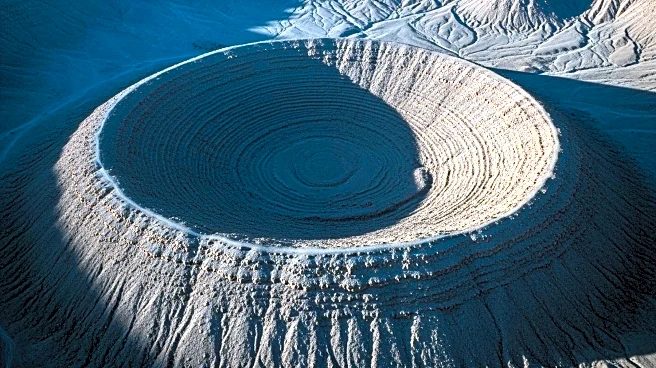What's Happening?
Researchers in China have uncovered a massive impact crater in Zhaoqing, Guangdong Province, which is providing new insights into Earth's history of extraterrestrial impacts. The Jinlin crater, identified
as a bowl-shaped structure protected by weathered granite, is one of only about 200 confirmed impact sites globally. It is considered one of the youngest known craters, likely formed during the early-to-mid Holocene period, approximately 11,700 years ago. The crater measures 900 meters in width, surpassing Russia's Macha crater, previously the largest known Holocene impact site. The discovery suggests that the scale of impacts from small extraterrestrial objects during the Holocene is greater than previously recorded.
Why It's Important?
The discovery of the Jinlin crater is significant as it provides a clearer understanding of Earth's impact history, particularly during the Holocene period. The preservation of the crater, despite heavy rainfall and strong monsoons in the region, offers a rare opportunity to study the effects of extraterrestrial impacts on Earth's geological evolution. The findings could lead to a more objective basis for understanding the distribution and impact history of small celestial bodies on Earth. This research may also influence future studies on planetary defense and the potential risks posed by near-Earth objects.














